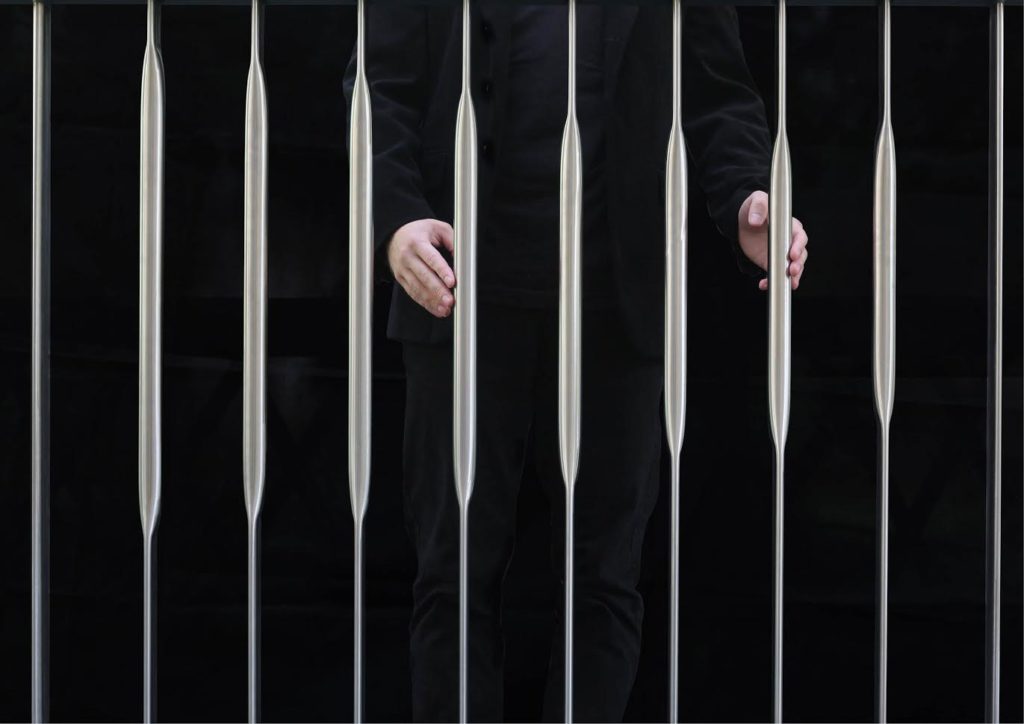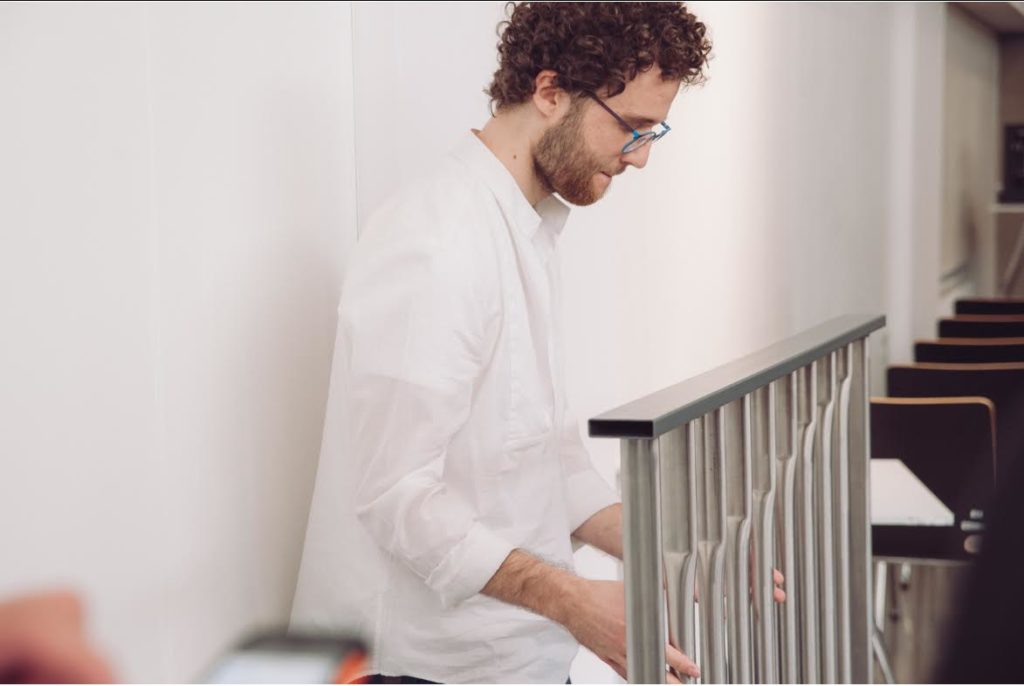‘Since I remember I was playing some instruments and I have been showing interest in music’ — I asked Jan Pfeifer about his graduation project ‘Urban Instrument’ thanks to which he won the first prize in the ‘MakeMe! 2016’ competition.

Jan Pfeifer, ‘Urban Instrument’, image courtesy of the artist
Jan Pfeifer is one of the ten most promising talents in design, according to the website culture.pl. He studied at the Faculty of Design at the Academy of Fine Arts in Warsaw. Last year he won the international competition for young designers – ‘MakeMe! 2016’. As a truly multidisciplinary artist and visionary, for the last two years he has also been involved in the ‘Observatory’ project conducted by the MALAFOR design studio and he cooperates with the Warsaw artisan workshop ‘Abażury’. Beyond design, Jan plays drums as part of a search for a fresh fusion of inspiration and finding universal language through music.
‘Urban Instrument’ was a diploma project at the Academy of Fine Arts, which Jan showed publicly for the first time in May 2016 at his degree show and then in November at the ComingOut. An omnivorous gaze through which he observes the world evokes the first inspiration to this project. The idea was to create a meeting place, playground and audiovisual experience at the same time – simply conveying the joy that comes from sharing music. The concept is the result of observing children’s behaviour in Bródnowski Park in Warsaw. Remembering those times playing outside from my childhood I can imagine that now it is not such a common view. However, Jan Pfeifer found them and observed that children passing a bridge hitting the uprights of a railing, creating accidental music. This has led to the design of a musical instrument – a railing whose sounds are fully harmonic, and the design fulfils all protective functions. The project consists of several modules, connected to each other depending on the space. Each module is an octave which means that it has eight basic sounds. Interestingly, the frame is made of steel and the rings of flattened stainless steel tubes. The pipe flattening treatment signals the length of the sound, and also gives ordinary industrial instruments the status of a musical instrument. The electronics in the middle allow the sound to be corrected so that the instrument would not be too loud and does not interfere in the peacefulness of the space. These organic assumptions intended to overcome the language barrier. ‘When musicians meet at a common jam-session they do not talk to each other. They start playing and the music becomes their language’ says Pfeifer.
I wanted this project to be a result of my interests – with my own assumptions not based on any brief. The project’s journey I have embarked on was relatively long. It has started with a word ‘meeting’ thanks to which the opportunities of development were quite abstract and open. I have been wondering what a meeting exactly is in the public space. I have spent hours observing how people behaved, I have collected my experiences, photos and short films in order to push my ideas further. For me design is not art so I do not have one everlasting inspiration or solution for my designs. I constantly strive to grow, develop and challenge myself so what can inspire me sometimes is happening by chance.’
‘When musicians meet at a common jam-session
they do not talk to each other.
They start playing
and the music becomes their language’
Jan made me realise that as humans we have the ability to separate ourselves from senses very easily. ‘Closing eyes quickly and intuitively makes us stop looking but we cannot close our ears – just isolate them. The sound of the city depends on the people who are creating its rhythm. So basically designing for cities is designing for people. Recently I have visited the castle in Cieszyn, which made a very positive impression on me. People live there differently – not in a hurry. It has given me new, fresh perspective compering to busy Warsaw where I live. I really want to continue the development of the design in urban context. Social psychology, the history of the place and the endless array of things you can learn from every new design are so fascinating. It seems to me that the public space gives the maximum field to explore the various areas of knowledge. There are a lot of things which are refining my sensibilities – I have a few projects in my mind that are based on from my observations.’
I believe that the power of ‘Urban Instrument’ lies in its usability and simplicity. All you have to do is touch the rings to get the sound out. It is both for children who are entering the world of art and music but also for musicians who may discover some amazing qualities for themselves. The Jury of the ‘MakeMe! 2016’ competition appreciated the fact that Jan Pfeifer can look beyond design and also answer the higher needs of inhabitants. The courage of thinking, feeling of form and the fresh look of design enable Jan’s wings to spread and fly high to the next mind-blowing ideas.
Written by Marta Klara Sadowska

Jan Pfeifer, ‘Urban Instrument’, image courtesy of the artist
Marta Klara Sadowska – Fine art student at the Central Saint Martins. Lives between London and Warsaw. ‘By seeking new ways to communicate my ideas I use a mixed media approach to explore the complexities around me. I am interested in the figure and its link between fine art and fashion as well as writing about it’.





